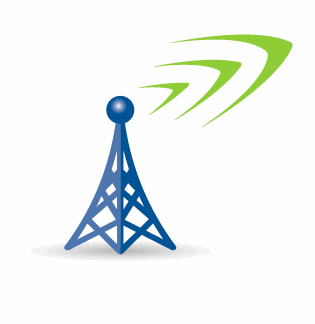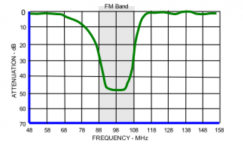andy404ns
Member
I'm looking for some help in understanding what an amplifier is doing. Here is my situation:
Years ago when I did first moved into my house I had an antenna mounted in the attic. From there I had RG-6 running down the exterior of the house, in to the basement, and then I connected it into the existing cable lines so I could plug my Electroline splitter into the coax jack in my upstairs office. Not ideal for many reasons. This was probably 250-300 feet of RG-6 with numerous connectors.
Well, in the basement, I ran the RG-6 into an amplifier that I think the Comcast guys had left at the house. It's a Channel Master 3044 (I'll try to attach a picture of it). I have no real knowledge of amplifiers but it was there and it was F-connectors so yeah... I used it. And I got decent reception.
The good news is I've reworked everything as of a week ago. The attic antenna now drops through the wall for a grand total of 25 feet and it's now LMR-400 (a bit overkill I guess). But here's the not fun thing. When I did all that, the reception was pretty much the same, maybe even slightly worse on some channels. I figured I would have seen a big improvement. I got to thinking and wondered if the amplifier really did that much. So to test I added it back into the system. It's now sitting right off the antenna prior to the 25 foot LMR run. So I now have antenna --> RG-6 --> amplifier --> LMR (with adapters along the way). And my reception is much better. And that's across the spectrum.
Here's what I don't get. I've searched and read through dozens of threads here and the consensus seems to be that amplifiers are the last thing you want to add as you're trying things to improve reception and that a lot of times they can make things worse. I've always simply thought of it as "it will amplify everything - including the noise". That's my super scientific understanding. So I'm really confused as to why my experience is so opposite that, especially since this particular amplifier isn't designed for this use. And that begs the question - if an amplifier really is benefiting me, is there a better one I can use?
I started another thread outlining my antenna upgrade experience. I mention it here because I confirmed that reception is greatly improved with both antennas when that amplifier is attached. So it's not related to the antenna in case that's a concern. You can find that thread over here:

 forums.radioreference.com
forums.radioreference.com
Anyway, I'm just looking for some guidance on why this amplifier seems to be helping so much and if there's anything else I can / should do here. All the reading I've done says I shouldn't use it but it sure does seem to make things better.
Thanks so much!

Years ago when I did first moved into my house I had an antenna mounted in the attic. From there I had RG-6 running down the exterior of the house, in to the basement, and then I connected it into the existing cable lines so I could plug my Electroline splitter into the coax jack in my upstairs office. Not ideal for many reasons. This was probably 250-300 feet of RG-6 with numerous connectors.
Well, in the basement, I ran the RG-6 into an amplifier that I think the Comcast guys had left at the house. It's a Channel Master 3044 (I'll try to attach a picture of it). I have no real knowledge of amplifiers but it was there and it was F-connectors so yeah... I used it. And I got decent reception.
The good news is I've reworked everything as of a week ago. The attic antenna now drops through the wall for a grand total of 25 feet and it's now LMR-400 (a bit overkill I guess). But here's the not fun thing. When I did all that, the reception was pretty much the same, maybe even slightly worse on some channels. I figured I would have seen a big improvement. I got to thinking and wondered if the amplifier really did that much. So to test I added it back into the system. It's now sitting right off the antenna prior to the 25 foot LMR run. So I now have antenna --> RG-6 --> amplifier --> LMR (with adapters along the way). And my reception is much better. And that's across the spectrum.
Here's what I don't get. I've searched and read through dozens of threads here and the consensus seems to be that amplifiers are the last thing you want to add as you're trying things to improve reception and that a lot of times they can make things worse. I've always simply thought of it as "it will amplify everything - including the noise". That's my super scientific understanding. So I'm really confused as to why my experience is so opposite that, especially since this particular amplifier isn't designed for this use. And that begs the question - if an amplifier really is benefiting me, is there a better one I can use?
I started another thread outlining my antenna upgrade experience. I mention it here because I confirmed that reception is greatly improved with both antennas when that amplifier is attached. So it's not related to the antenna in case that's a concern. You can find that thread over here:
New DPD OmniX vs old RS 20-176 -- Findings
I have been using a Radio Shack 20-176 for about 15 years now and wanted to try an upgrade. I purchased a DPD OmniX based in large part on reviews here and also to support a small business with quality customer service. I received the OmniX a few days ago and wanted to share my findings. First...
Anyway, I'm just looking for some guidance on why this amplifier seems to be helping so much and if there's anything else I can / should do here. All the reading I've done says I shouldn't use it but it sure does seem to make things better.
Thanks so much!




